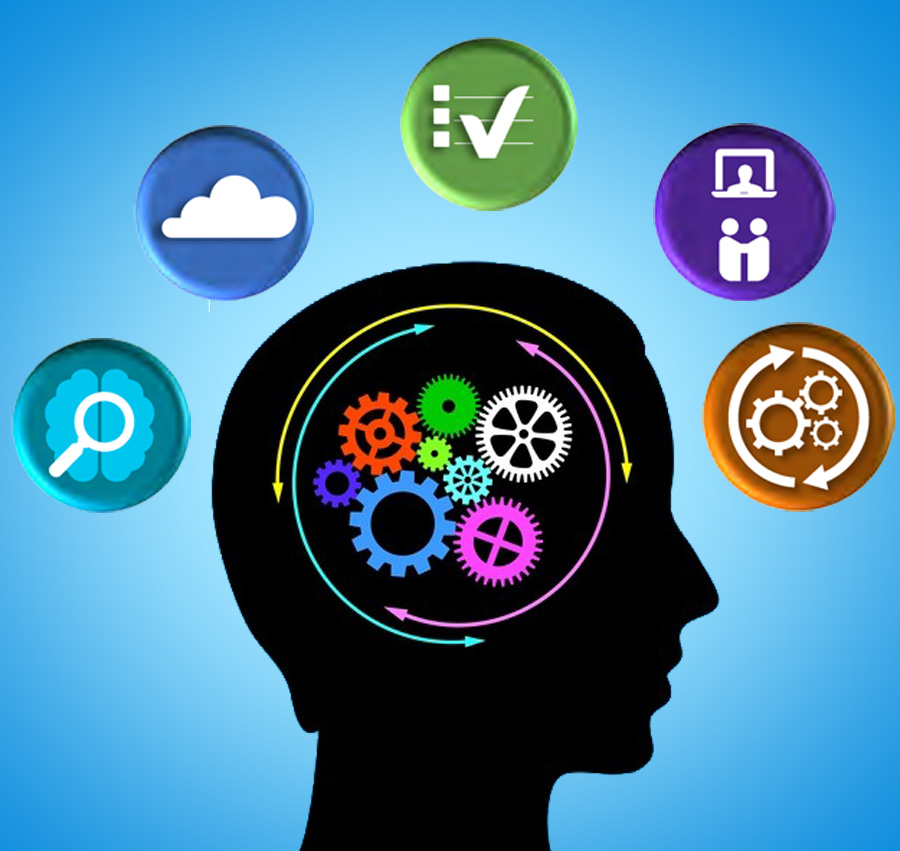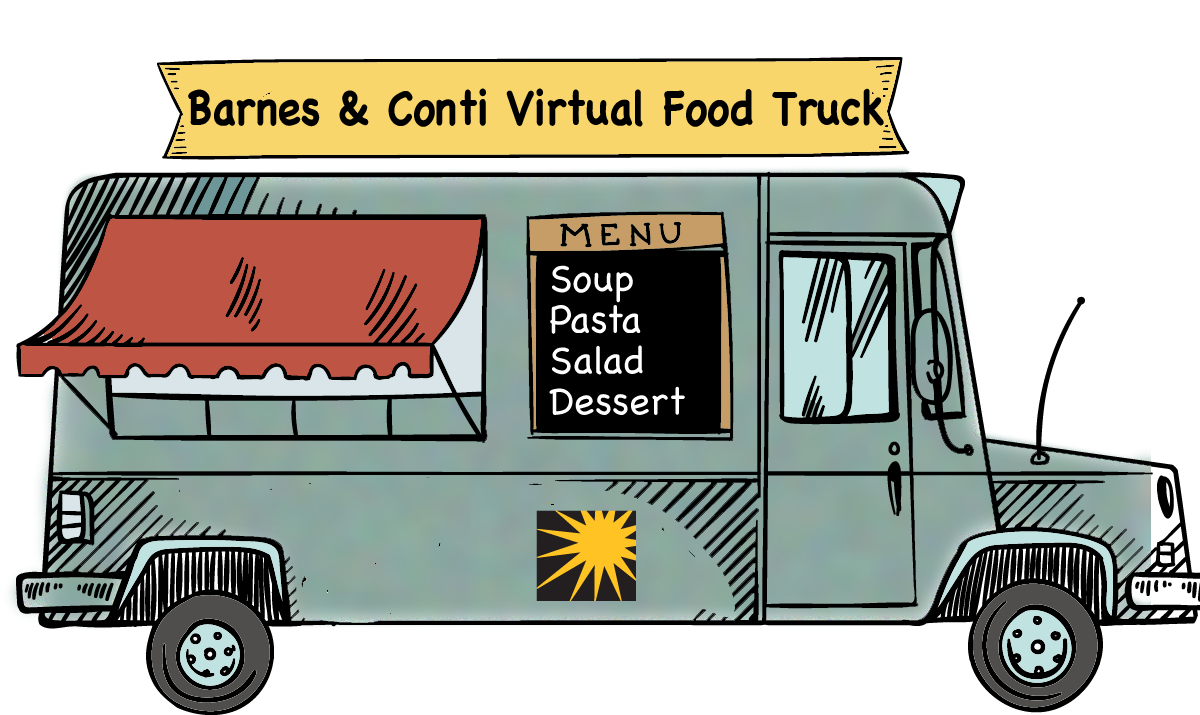
The Opportunity in the Crisis
B. Kim Barnes

Reprinted from LinkedIn, March 12, 2020
When I was a child, there was a dreaded disease making the rounds. Yellow quarantine signs appeared on doors in my neighborhood. A neighbor child whom I knew died from the disease—she was the first person I actually knew who had died of any cause. The disease was polio and I grew up before the first polio vaccine was available. It was summer in Minnesota (hot, muggy, and no air-conditioning except at movie theaters) and we weren’t allowed outdoors. I can only imagine what that summer must have been like for the moms—and it would have been moms in those days. Some weeks after the epidemic began, the local university radio station, KUOM, began broadcasting special programming for children who were stuck at home. The one I remember fondly was called “Drawing to Music” and it consisted of playing classical music while encouraging children to draw what the music made them imagine, then send their drawings to the station, where many of them were awarded prizes. This and other engaging programs helped to get us—and our moms through a difficult summer.
Today, we have many ways of entertaining and distracting ourselves and our children during this crisis, which is keeping so many of us at home or at least limited in the extent of our movement in the world. It’s perfectly possible to work effectively from home if we are lucky enough to do the type of work that can be done remotely and have the tools that can make it happen. Still, for many, that experience is missing something…real contact with others, office gossip, high fives to celebrate, the running joke, the birthday cakes.
What was it about that long-ago experience with what was not yet public radio that makes me remember it seven decades on? Perhaps because it was something special and new. It was not an imitation of what had existed before (which was playing outside and being a free spirit). It was a gift, a bit of magic, an invitation to create, an introduction to another way of thinking and being.
Today, while we get used to what we hope will be a brief period of “social distancing,” we need not have “emotional distancing” or “intellectual distancing.” We have an opportunity to find new ways to connect, to create, to think together. We can design a new virtual playground where ideas and relationships can develop; a virtual concert hall and museum where we can make and display the work of our combined imagination. Instead of “making do,” we can “make new.” The Chinese symbol for crisis, we know, is made up of the icons for danger and opportunity.
As Nobel prize-wining economist, Paul Romer, said, "A crisis is a terrible thing to waste." Let’s take this on as a challenge, not just as a necessity.
Tips for Going Remote

By Dineen Digiacomo, Account Coordinator and Lauren Powers, SVP, Business Development
Both of us have been working remotely for over 25 years. We love it, but it requires some adjustment, recalibration and management of the environment around you. There are a lot of great articles and webinars out there on working remotely, but we thought we would share some personal insights, as this becomes the “new normal” for most of us.
Set Up Your Environment
Prepare a separate space. Even if you are limited in your environment, carve out a corner of a room that is dedicated and has none of your personal paperwork or assorted items around it. Your head will be clearer. Don’t be afraid to change it up from time to time – move to another room for a change of pace and scenery. If more than one of you work at home, come up with a plan to manage how you will share the space in order to prevent distractions and conflict.
Manage Families
For those of you who have children home while you are working remotely, have a family discussion about how you are all going to respect some boundaries and then make sure you reinforce them. Our kids knew, that unless it was an emergency, they could not interrupt us when we were on the phone. With school age children, you could perhaps start up a movie before you take an important call. With teenagers in your home, if they are anything like ours, they sleep late. You could do the bulk of your work in the mornings while they’re sleeping. And of course, that would be the opposite if you have little ones. Perhaps the bulk of your work could be done during naptime or in the evenings after they’re in bed. It’s also important to make your schedule clear to the children so they know when they can expect to have your time and attention available to them. Build in play breaks with them if they are young. Take meals and breaks together and if there are other adults in the household or older children, figure out how you can take turns with the little one(s). It will be challenging but you will find your groove. Your kids will catch on quickly. I just heard about someone’s children saying, as their father entered their room to check on them, “Dad, go away!We have to concentrate on our online learning.”
Take Breaks
Pace yourself as you would if you were in an office. Take frequent breaks, and give yourself a break/reward after completing key milestones (although you will want to make sure that this is not always a trip to the kitchen for a little snack). A dog walk, call to a friend or colleague, laundry load, small cleaning jobs, unloading the dishwasher or preparing some vegetables for dinner might be better alternatives.
Get the Tools You Need
Don't be afraid to ask for the tools you will need: high speed internet connection, good chair to preserve your back, a printer if you do a lot of screen work and need to go back and forth between documents.
Share New Contact Information
Make sure the people who need to reach you have your new contact information.
Virtual Tools
Get up to speed quickly on the virtual tools you will be using. If you want some advice, contact Nermin Soyalp, NSoyalp.IC@barnesconti.com, who is our virtual maven and is standing by ready to help.
Stay in a Professional Mindset
Get dressed for work every day! Pajamas are really not a good option. And remember, virtual calls often have a video component. Keep doing all the organizational and time management practices that work for you. You will need them now more than ever.
Work/Life Integration
Set boundaries for your schedule. Work when you need to work, but do not allow it to leak over into your personal life. Use the flexibility to better integrate your activities. It may not have to be 9-5 if you have children at home – if grabbing a few hours early or returning to work after bedtime helps, do it as long as you are balancing your personal needs as well.
Transition Time
Create a transition activity. For many, commuting time helps with transitioning. For those at home, you may pour a glass of wine or seltzer, turn on the news, or take the dog or yourself for a walk. (Watch though how much you reach for that glass of wine, especially in this challenging time!)
Stay More Connected to Your Team and Others
Reach out to your team regularly. You may want to have more virtual check-in calls to kick off the day or week. Reach out to people more often on a personal basis to keep connected as you would in those water cooler conversations. Have virtual coffee and lunch breaks, and even organize Virtual Happy Hours!
Word of Caution to Managers
This is the time to focus on outputs, not whether someone is chained to a desk 9-5. Hold people accountable for results not the hours they put in. You may be surprised at how much more people accomplish!
For still more tips on working remotely, try this article,
“Remote work is just different”: learning to live with working from home

GOT VIRTUAL…YES!
When you are ready, we can meet your learning needs virtually. We have converted many of our programs to engaging, experiential virtual experiences. Exercising Influence, Strategic Thinking and Intelligent Risk-Taking are all available as custom virtual experiences with combinations of online micro-learning modules, individual assessments, “live” webinars with lots of opportunities for skill practice and feedback, post session reinforcement activities and 1-1 virtual coaching. Check out “Learning Journey” and let Lauren Powers know if you would like to discuss your needs as you deal with a more remote workforce and/or experience a sample session.
We are also looking to convert additional programs so let us know your priorities. And we are now offering a Virtual Applications Coaching experience for our clients. More about this shortly!
We are here! Please let us know how we can help you as we all move through this very challenging time.
Download Our Learning Journey
COVID-19: We may be experiencing it differently…AND IF WE PAUSE, WE CAN MAKE THE WORLD A BETTER PLACE!
Lauren Powers, SVP, Business Development
Also published on LinkedIn, March 17, 2020
These past few days, weeks, or months – depending upon where in the world you are – have been challenging our ways of being at work, at home, and in our communities. COVID-19 has upended our world as we know it. We have faced losses requiring adjustments to our way of life ranging from relatively minor to dramatic and even tragic. We worry about those we love. While we had been more carefree, we now consider every surface we touch, hunt down hand sanitizer and cleaning supplies, and figure out how to accomplish our work virtually – assuming we are fortunate enough to be able to do so. What are the economic implications and how will that affect us? How we can maintain “social distance” without suffering emotional isolation? And, most importantly, how we can keep those we love healthy and secure?

As I reflected on my own personal reaction and those of my friends, colleagues and clients I recalled the Kubler-Ross Five Stage Model. Elisabeth Kubler-Ross was the speaker at my college graduation and while her original model was used to help the terminally-ill, it has been used subsequently to help people understand individual responses to all types of change. The stages she posited, in approximate order of their occurrence (although not always in sequence), include: Denial, Anger, Bargaining, Depression and Acceptance.
I shared some thoughts with a few of my colleagues and thought I would share it more globally as it helped me understand why we might be experiencing coronavirus so very differently. We are all facing loss and each of us experiences it at different times and in different ways, thereby causing different degrees of fear, understanding and empathy. As I read in one of the many articles in my newsfeed, “Everyone catches on to the enormity of the pandemic at their own rate.” And, we deal with it in our own way, moving back and forth through the stages, and not necessarily sequentially.
Below are a few personal examples:
Denial
At work, two weeks ago when we started discussing how we might react to deal with program cancellations, I was from the school of, “let’s not panic!” The weekend before last, we went to see Hamilton in New York City…perhaps not the smartest move, but then again it was Hamilton! I felt like we were untouchable for a few more weeks; after all, the virus was in other regions. I comforted myself by believing it was somewhere else, not in my neighborhood, yet!
Anger
New York City was a wake-up experience. I was confronted with a concrete experience of how difficult it is to maintain safe practices in congested areas; it was no longer abstract. I became fearful, sharing with my kids all sorts of cleaning advice and products, and going a little nuts over my youngest’s pending trip to Mexico. When I shared my fears with my colleague in Massachusetts, it was clear she was early in her journey, a little dismissive, and wanting to avoid the topic. Two days later, we spoke again and her reaction was totally different. She was, in her words, “pissed!” Frustration was building as plans kept changing; worry about safety and financial implications had taken hold. Cases of coronavirus had been diagnosed in the Boston area; the world around her had changed.
I also began to notice my own anger. My boss lives in California and had just cancelled a long-awaited trip to Europe after much deliberation. She was further ahead on the reality curve than I was, here on the East Coast. Whereas I had become resistant, she was tirelessly generating ideas for how we might support clients as they wrestle with the new demands of the pandemic. I was focused on our calendar, racing to convert programs to virtual sessions with the landscape changing minute by minute – and she was already focused on how we can nurture others and provide helpful tips for their new reality. When she began to discuss this newsletter, suggesting a recipe for risotto with dried mushrooms, I snapped, “Too expensive!” On later reflection, it may have been a good idea, but not now, at least for me. I was reactive and in crisis mode, and could not think about risotto. We laugh about it now, but it was a powerful example of how our impatience with one another may stem from where we are in the process. We will all have our “risotto” moments!
Bargaining
No doubt you have probably noticed that every conversation you overhear or engage in is about dealing with the looming pandemic. People are reaching out, sharing stories, swapping ideas and supporting one another in coming to terms with the new reality. This bargaining helps us process the anxiety and fear, and, while it may take us time to arrive, we will ultimately develop well-considered plans of action.
Depression
I am exhausted daily as I worry about keeping my 95-year old mother virus-free, and my kids safe but not overwhelmed. Every decision is a calculated risk, with a lot of scenario planning for various “what if’s.” Naturally, this takes an emotional toll. We need to remember to take care of ourselves while we are worrying about others. Never underestimate the importance of enough sleep, long walks (outdoors is a fairly virus-free zone as long as we keep our distance), good movies and books, and lighter moments.
Acceptance
This weekend, I saw glimmers of this final phase while still retreating at times to the others. I tell myself, “We are going to be OK, but we need to prepare for a bumpy ride that might last a while”. I am using “social distancing” to get long overdue projects around the house completed. The weekends are a now a version of a “staycation”. At work, I am excited by the creativity and teamwork this pandemic has unleashed. I have had some of the best-ever conversations with clients over the past week. We will experiment with new and creative ways to provide learning and development opportunities together – which, when this is all over, will remain with us and make our work and relationships stronger.
As you engage with others over the next few weeks, consider where they are in their process. It may help with the impatience and frustration you might be feeling. Stress and anxiety can overwhelm us if we don’t pause and think about the context of the other person’s experience.
We all move through this experience differently, based on how we experience COVID-19 in our own small universe. On top of that, we have different approaches to risk-taking and, more than ever, we need to use empathy and understanding, think strategically about each decision we undertake and manage risk in a way that will protect ourselves, our loved ones and our communities.
Be well and keep one another safe!
To our Gmail Subscribers:
Our apologies, there was a small error in source code of this newsletter which made it difficult, if not impossible to read, in gmail’s webmail interface. We have corrected the error, and we hope you don’t mind that we are resending it to you. Again, our apologies.
Like this newsletter?
Subscribe now!
For more valuable information and special offers, follow us on social media using these links:
In this Issue:
- “The Opportunity in the Crisis” by B. Kim Barnes (above)
- “Tips for Going Remote” by Dineen Digiacomo and Lauren Powers
- Virtual Programs and Learning Journeys
- COVID-19: We may be experiencing it differently…AND IF WE PAUSE, WE CAN MAKE THE WORLD A BETTER PLACE! by Lauren Powers
- Featured Art: "Composition 8", by Wassiy Kandinsky (Editor's note: Kandinsky was an accomplished musician, and many of his paintings were inspired by favorite musical compositions)
The Barnes & Conti Virtual Food Truck

We've put together some new recipes and some old favorites that we hope will nourish you during the crisis.
Our only criteria was that the recipes be relatively easy to make, reasonably healthy, and consist mostly of ingredients that you are likely to have on hand, or will be able to get easily.
We are going to be sharing recipes regularly so please watch for them. And, we would love to have you submit some of your favorites as you socially distance and/or shelter in place, and we will put them up on our website. Please send them to Joel Kleinbaum, jkleinbaum@barnesconti.com.
Recipes Included:
- Carrot and Cashew Soup (Kim Barnes)
- Spring Pea Soup (Lauren Powers)
- Mushroom Lover's Pasta (Joel Kleinbaum) see below
- Pasta Cacio e Pepe (Lauren Powers)
- Mediterranean Tuna Salad (Kim Barnes)
- Chili for Days! (Lauren Powers)
- Aunt Josephine's Coffee Cake (Kim Barnes)
- Homemade Hand Sanitizer (Nermin Soyalp) see below
Recipe: Moisturizing Homemade Hand-Sanitizer with Essential Oils

Nermin says, “In the last couple of weeks, hand sanitizers were in high demand and hard to find, which encouraged me to make my own at home. It turns out hand sanitizer is not that hard to make! And the ingredients may already be at your home.”
Ingredients
- 3 ounces of high-proof vodka or rubbing alcohol. (Nermin says that she had the rubbing alcohol at home, so she used it)
- 3 ounces of pure 100% aloe vera for a cream-like-result or you can also use witch hazel to make a spray.
- 7-12 drops of lavender essential oil
- 30-35 drops of tea tree essential oil
- 1/4 teaspoon of vitamin E oil.
Method:
- Nermin recommends using a measuring cup (pictured) for mixing, it will make bottling the sanitizer easier
- Add essential oils and vitamin E oil in a cup and swirl. Breathe in the aroma (for fun). It should smell very good.
- Add the alcohol, mix well.
- Add the aloe vera and mix it again.
- Pour the mixture inside a dark secure bottle. Nermin used the aloe vera bottle, since she had emptied it.
- Shake gently before each use.
Says Nermin, “I wish you healthy and virus-free weeks ahead.”
Mediterranean Tuna Salad
B. Kim Barnes, Barnes & Conti CEO

Here’s a quick and easy recipe from the collection of Kim Barnes.
Ingredients
- 1 (6-ounce) can or jar of tuna (packed in spring water)
- 1/2 cup artichoke hearts, diced (from a jar)
- 1/2 cup pitted Kalamata olives, chopped
- 1 roasted red pepper, chopped (or a jar of same)
- 1/4 cup fresh chopped parsley
- 2 tablespoons slivered basil leaves (or a smaller amount of dried basil)
- 3 tablespoons olive oil
- Juice of 1 lemon (if not available, substitute with some good balsamic vinegar)
- Salt and fresh ground pepper, to taste
Method:
- Combine all of the ingredients in a bowl and season with salt and pepper. Chill until ready to serve.
- Serve in lettuce leaves, on a baguette, or on whole grain crackers.
Serves 2 as a main dish, and 4 as a salad or appetizer
Mushroom Lover’s Pasta

Joel Kleinbaum, our recipe and newsletter editor contributed this. It's much easier to make than mushroom risotto (see Lauren's article), and the dried mushrooms are optional.
Ingredients:
- 1/2 lb. mushrooms (crimini and portabello are best), sliced or chopped in bite-sized pieces
- 3-4 cloves garlic (or more), minced
- 2 tbsp olive oil
- 1/3 cup Italian parsley, chopped
- 1 oz (or more) dried porcini mushrooms (optional)
- 1/3 cup dry white wine
- 1/3 can (or more) tomatoes (Italian, if possible)
- Your favorite dried pasta; penne, fusilli, and linguine all work well. (16-12 oz)
- Parmesan cheese for grating at the table
- Salt
Method:
- If using dried porcini, soak them in about 1/2 2/3 cup almost boiling water for at least 10 minutes. Reserve the soaking liquid! It is full of flavor. Squeeze any excess moisture out of the mushrooms (but reserve it), and strain the soaking liquid and chop the reconstituted porcini.
- Put a large pasta pot on to boil. Add about 1 tbsp salt to the pasta water.
- Slowly sauté the garlic in the olive oil in a sauté pan large enough to accommodate all the mushrooms until the garlic just begins to color. Add the mushrooms, 1/4 tsp salt, and saute over medium high heat until the mushrooms give off their liquid, and reduce considerably in size.
- If using the dried porcini, add them now, along with the parsley. If not, just add the parsley and saute another minute or two.
- If using the dried porcini, add the porcini soaking liquid bring to a boil, and reduce until the liquid is greatly reduced (2 tbsp or so).
- Add the wine, and reduce it to a 2 tbsp or so.
- Add the tomatoes, bring to a boil, and simmer until the pasta is done (or boil, if there is a lot of liquid, until the sauce is the consistency that you like).
- In the meantime, add the pasta (3 oz per person for a modest portion, more for hungry teenagers) and cook until al dente. Sauce the cooked pasta in a warm bowl, and serve with plenty of parmesan cheese for grating.
Serves 4
You are receiving these emails from Barnes & Conti because you are a client, colleague, and/or friend of Barnes & Conti Associates. or you contacted us through our website, at a trade show, or via social media. Barnes & Conti does not sell, trade, or give away mailing lists or email addresses to anyone. Period.
If you no longer wish to receive these bulletins, use this link to unsubscribe or write us at Barnes & Conti, 940 Dwight Way Suite 15, Berkeley, CA 94710.
*Please don't forward this entire email; the person you forward to might inadvertently unsubscribe you with the above link!